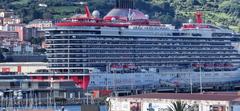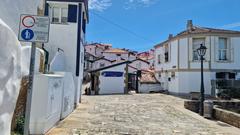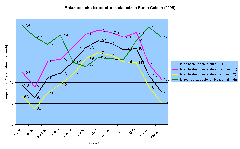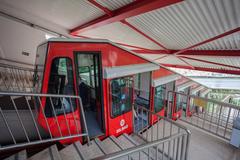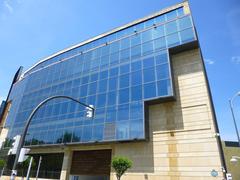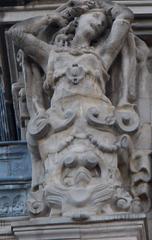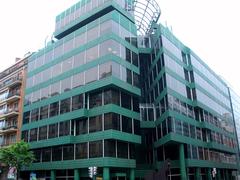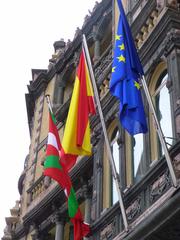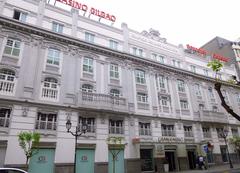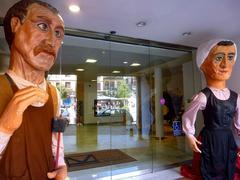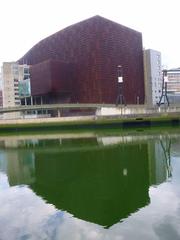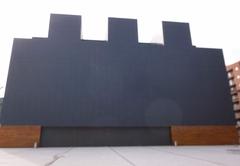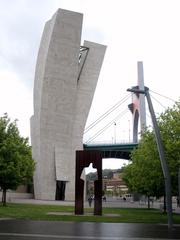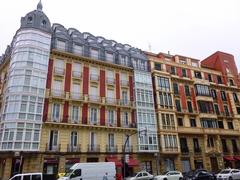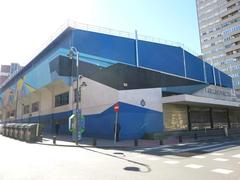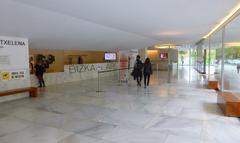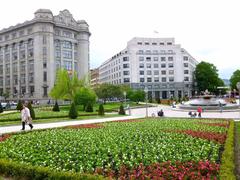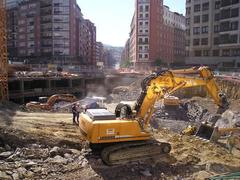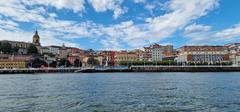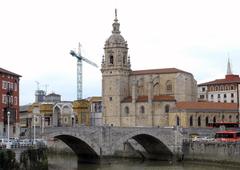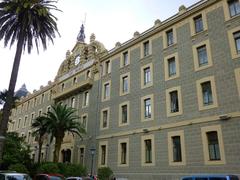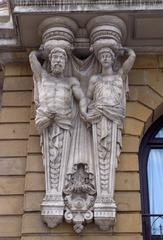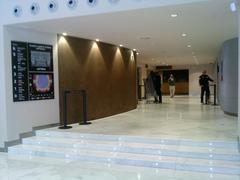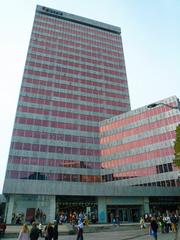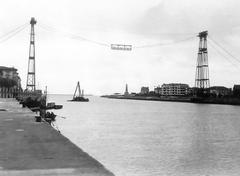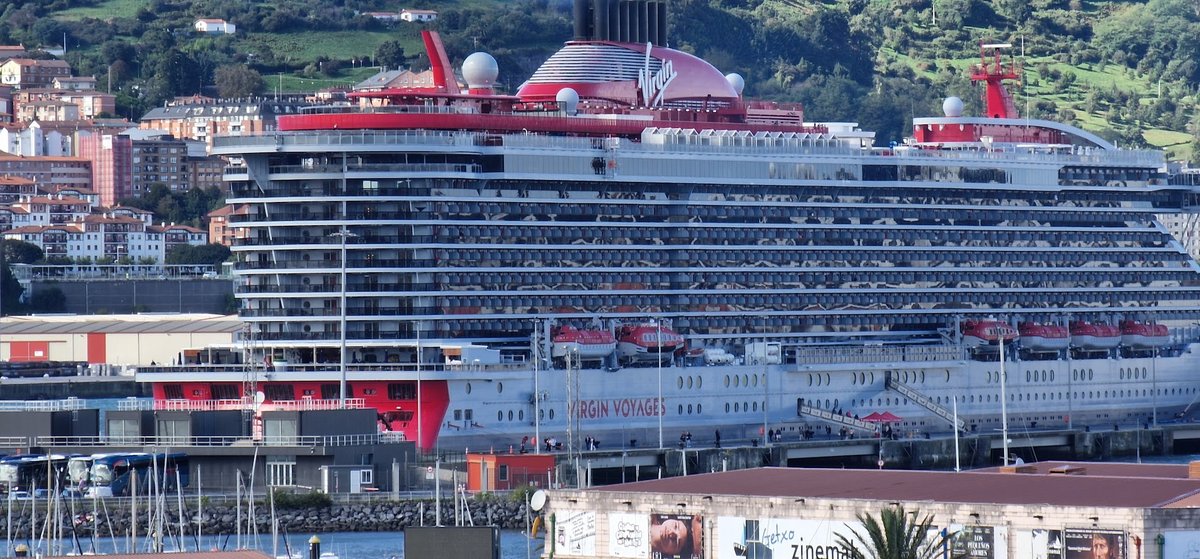
Ereagako Kaia Visiting Hours, Tickets, and Travel Tips
Date: 18/07/2024
Introduction
Ereagako Kaia, also known as Ereaga Dock, is a historical gem nestled in the vibrant city of Bilbao, Spain. This iconic site, located along the Nervión River in the Getxo district, has been a cornerstone of Bilbao’s maritime and cultural history since its construction began in the 19th century. Initially established to facilitate the export of the region’s abundant iron ore, Ereagako Kaia quickly became a bustling hub of economic activity. Over the decades, it has witnessed significant historical events, including the Spanish Civil War, and has evolved alongside the city’s industrial and cultural development (Bilbao Tourism Official Website).
Today, Ereagako Kaia is not only a testament to Bilbao’s rich industrial past but also a vibrant cultural hotspot. The area has been revitalized into a modern urban space featuring promenades, parks, and cultural venues. This transformation reflects Bilbao’s commitment to preserving its maritime heritage while embracing contemporary urban development. Visitors to Ereagako Kaia can explore its historical and architectural marvels, enjoy various cultural events, and take in the picturesque waterfront views (Getxo International Jazz Festival). This guide aims to provide comprehensive information on Ereagako Kaia, including its historical background, visitor information, and travel tips, ensuring a memorable and enriching experience for all who visit.
Table of Contents
- Introduction
- Historical Background
- Visitor Information
- Architectural and Engineering Marvels
- Preservation and Heritage Initiatives
- FAQ
- Conclusion
Historical Background
Early Development and Maritime Significance
Ereagako Kaia has a rich maritime history that dates back to the early 19th century. The port area, known for its strategic location along the Nervión River, played a crucial role in the economic development of Bilbao. The port’s establishment was driven by the need to facilitate the export of iron ore, which was abundant in the Basque region. The iron ore industry was a significant economic driver, and the port’s development was essential for transporting these resources to international markets.
The construction of Ereagako Kaia began in the early 1800s, with the primary aim of enhancing Bilbao’s maritime infrastructure. The port’s initial design included docks and warehouses to accommodate the increasing volume of goods being transported. By the mid-19th century, Ereagako Kaia had become one of the busiest ports in Spain, contributing significantly to the region’s economic prosperity.
Industrial Revolution and Expansion
The Industrial Revolution in the late 19th and early 20th centuries brought about significant changes to Ereagako Kaia. The port underwent extensive expansion to accommodate the growing industrial activities in Bilbao. New docks, warehouses, and transportation infrastructure were constructed to support the burgeoning industries, including shipbuilding, steel production, and manufacturing.
During this period, Ereagako Kaia became a hub for international trade, attracting merchants and investors from across Europe. The port’s strategic location and modern facilities made it a preferred destination for shipping companies. The influx of goods and raw materials facilitated the growth of Bilbao’s industrial sector, transforming the city into a major economic center in Spain.
20th Century Developments
The 20th century witnessed further developments at Ereagako Kaia, driven by technological advancements and changing economic dynamics. The port adapted to the evolving needs of the shipping industry, incorporating modern equipment and facilities to enhance efficiency. The introduction of containerization in the mid-20th century revolutionized cargo handling, leading to the construction of specialized container terminals at Ereagako Kaia.
The port also played a vital role during the Spanish Civil War (1936-1939), serving as a strategic location for military operations and supply routes. Despite the challenges posed by the war, Ereagako Kaia continued to function as a critical maritime hub, supporting the region’s economic activities.
Modern Era and Cultural Significance
In recent decades, Ereagako Kaia has undergone significant transformations to adapt to the changing economic landscape. The port has diversified its activities, incorporating tourism and cultural initiatives to attract visitors. The redevelopment of the waterfront area has created a vibrant space for leisure and recreation, with modern amenities and attractions.
One of the notable developments in the modern era is the integration of Ereagako Kaia into Bilbao’s urban fabric. The port area has been revitalized with the construction of promenades, parks, and cultural venues, making it a popular destination for both locals and tourists. The transformation of the port area reflects Bilbao’s commitment to preserving its maritime heritage while embracing contemporary urban development.
Visitor Information
Tickets and Visiting Hours
Ereagako Kaia is accessible to the public year-round. While there are no specific entrance fees for the port area itself, certain attractions and facilities within the port may require tickets. For the most current information on visiting hours and ticket prices, it is recommended to check the Bilbao Tourism Official Website.
Travel Tips and Nearby Attractions
- Accessibility: Ereagako Kaia is easily accessible by public transportation, including buses and metro services. Ample parking facilities are available for those traveling by car.
- Nearby Attractions: Visitors can explore nearby cultural and historical sites such as the Guggenheim Museum Bilbao, the Maritime Museum of Bilbao, and the historic Casco Viejo (Old Town).
- Special Events: Ereagako Kaia often hosts various events and festivals throughout the year. Check the official tourism website for the latest updates on upcoming events.
- Guided Tours: For an in-depth understanding of the port’s history and significance, consider joining a guided tour. Many tours are available in multiple languages and provide valuable insights into Ereagako Kaia’s past and present.
- Photo Spots: The waterfront area offers picturesque views, making it an ideal location for photography enthusiasts. Iconic landmarks like the port’s preserved cranes and modern architectural marvels provide excellent photo opportunities.
Architectural and Engineering Marvels
Ereagako Kaia is home to several architectural and engineering marvels that highlight its historical significance. The port’s iconic cranes, which were once used for loading and unloading cargo, have been preserved as symbols of Bilbao’s industrial heritage. These cranes, along with the historic warehouses and docks, provide a glimpse into the port’s past and its role in shaping the city’s economic landscape.
The port area also features modern architectural landmarks, such as the Euskalduna Conference Centre and Concert Hall, which was built on the site of the former Euskalduna shipyard. This state-of-the-art facility hosts a variety of cultural events and conferences, contributing to Bilbao’s reputation as a cultural and economic hub.
Preservation and Heritage Initiatives
Efforts to preserve the historical significance of Ereagako Kaia have been undertaken by various organizations and government bodies. The port area has been designated as a cultural heritage site, ensuring the protection and conservation of its historic structures and artifacts. Initiatives such as guided tours and educational programs have been introduced to promote awareness of the port’s history and its impact on Bilbao’s development.
The Maritime Museum of Bilbao, located near Ereagako Kaia, plays a crucial role in preserving and showcasing the port’s maritime heritage. The museum features exhibits on the history of the port, shipbuilding, and maritime trade, providing visitors with an in-depth understanding of Ereagako Kaia’s historical significance.
FAQ
Q: What are the visiting hours for Ereagako Kaia? A: Ereagako Kaia is open to the public year-round. For specific attractions and facilities within the port, visiting hours may vary. Check the Bilbao Tourism Official Website for the most current information.
Q: Are there guided tours available? A: Yes, guided tours are available and provide valuable insights into the port’s history and significance. Tours are offered in multiple languages.
Q: What nearby attractions can I visit? A: Nearby attractions include the Guggenheim Museum Bilbao, the Maritime Museum of Bilbao, and the historic Casco Viejo (Old Town).
Q: Is Ereagako Kaia accessible by public transportation? A: Yes, Ereagako Kaia is easily accessible by public transportation, including buses and metro services. Ample parking facilities are available for those traveling by car.
Conclusion
Ereagako Kaia’s historical background is a testament to its enduring significance in Bilbao’s economic and cultural development. From its early days as a bustling port for iron ore exports to its modern role as a vibrant urban space, Ereagako Kaia has played a pivotal role in shaping the city’s identity. The preservation of its historical structures and the integration of cultural initiatives ensure that Ereagako Kaia remains a cherished landmark for future generations. For more detailed information, you can visit the Bilbao Tourism Official Website.
References
- Bilbao Tourism Official Website. (n.d.). Retrieved from https://www.bilbaoturismo.net/BilbaoTurismo/en/tourists
- Getxo International Jazz Festival. (n.d.). Retrieved from https://www.getxo.eus/es/turismo/festival-jazz
- Bilbao Airport. (n.d.). Retrieved from https://www.aena.es/en/bilbao.html
- Bilbao-Abando Indalecio Prieto Station. (n.d.). Retrieved from https://www.adif.es/en/web/adif/estacion-bilbao-abando
